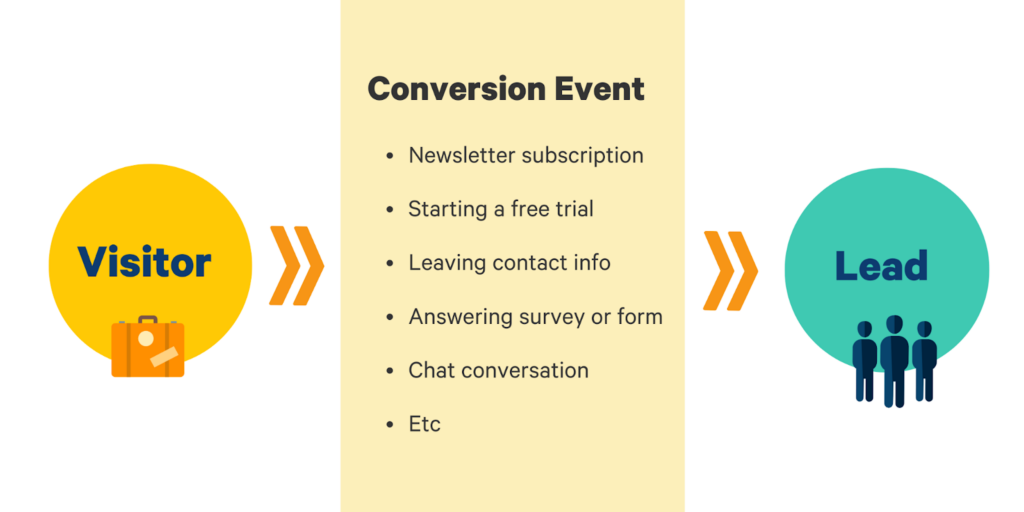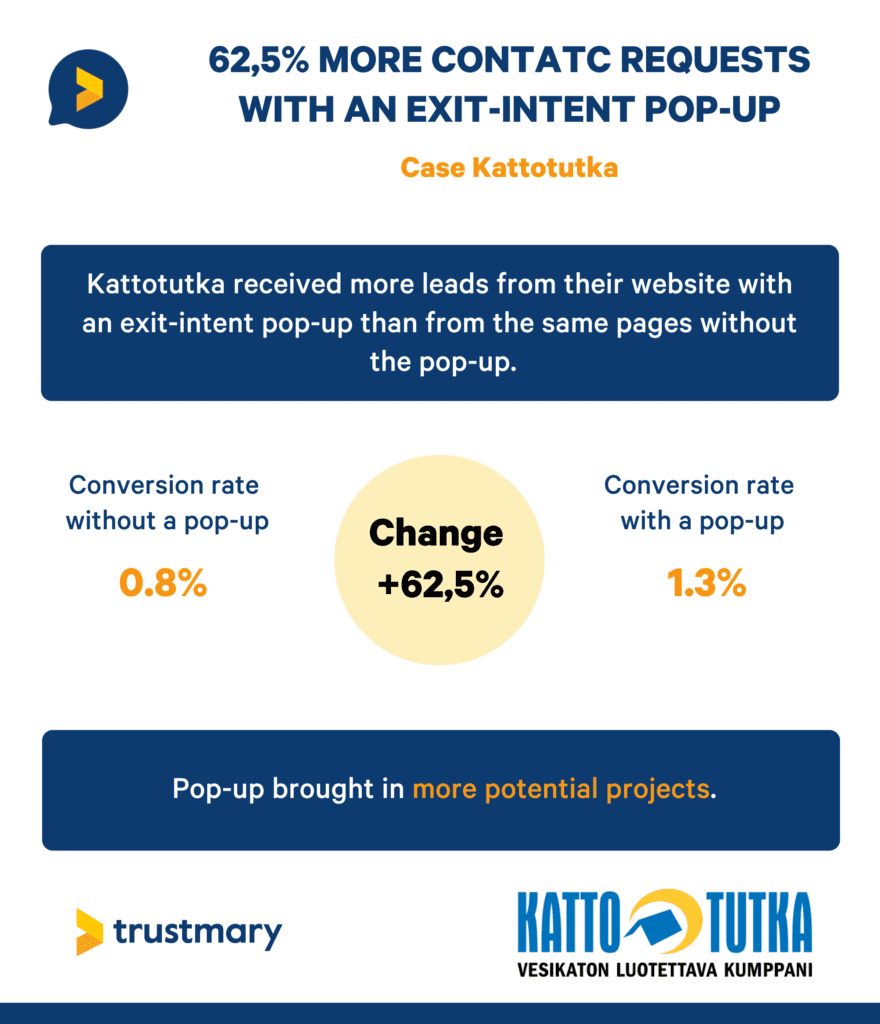CRO Marketing – 9 Actionable Strategies

Conversion rate optimization (CRO) is one of the most important and cost-effective ways to improve your marketing efforts.
Instead of spending more money on paid advertising and getting more (not-so-qualified) traffic, you target the existing visitors and get the qualified leads to convert better.
Let’s see what the CRO marketing process looks like, what CRO strategies you could use, and what kind of CRO tools there are.
Website Conversion Rate Optimization: Definition
Conversion Rate Optimization (CRO) is the process of systematically improving website performance by increasing the percentage of visitors that take a targeted action.
The target actions are usually a sign-up, purchase, or download, although they could be other actions as well. Whatever is important or considered a KPI (key performance indicator) can be considered as a conversion event.
The process involves defining goals, creating a hypothesis, gathering data, testing ideas, implementing changes and measuring outcomes.
Conversion rate is calculated by dividing the number of converted visitors with the total number of visitors.
Read what kind of CRO benefits you can reach by following the tips of this guide.
When to Do CRO Marketing?
Like stated earlier, conversion rate optimization marketing aims to increase the percentage of people who take desired action.
CRO marketing is not about raising brand awareness or getting more traffic in the first place.
It starts when you already have some existing website traffic.
If you are in a situation where you have virtually no organic or paid traffic to your website, it is not the right time to think about conversion rate optimization yet.
Your CRO marketing efforts would go to waste.
Instead, focus on strategies that produce online traffic to your website, like SEO, social media marketing and content marketing.
However, if you have a decent amount of website visitors but only a few of them convert into actual leads and customers, this guide is for you.
Stages of CRO Marketing Process
In this section, we will go over the phases of the conversion rate optimization process.
1. Defining Your CRO Marketing Goals
First of all, you need to define what is the conversion event that you are going to optimize.
Most often, conversion optimization focuses on making website visitors into leads. Sometimes the conversion event can even be a purchase.
“Smaller” conversion events, such as signing up for a newsletter or clicking through a link are often characterized as micro conversions.
Even though they are not necessarily leading to more sales immediately, they are important steps that lead to the next phase of a conversion path. They show you the marketing qualified lead who might turn into a paying customer later.
It is up to you to decide what you want to accomplish. Keep in mind what processes there are in your unique conversion funnel and which events produce the most qualified leads.

After you know the target conversion event, ask yourself:
- What is the conversion rate at the moment? Find out how many visitors there have been on your site in the past month, and how many people completed the conversion event in question (e.g. started a free trial). This is the benchmark against which you will reflect your progress.
- What is the goal conversion rate? For reference, see e.g. the average conversion rates and benchmarks for different conversions in your industry.
- How do I measure progress? There are different options for following the results of your test. We will come back to this part a bit later in the list.
2. Analyzing the Issue
Before you can move to solving the problem, you need to know something about the current situation and give your best guess about why you are not succeeding at the moment.
The answer can be found somewhere between the website’s current state and what your customers need and want.
Here’s a list of things you should consider when creating a plan:
- Ideal customer profile
- Demographics of your target audience
- What your customers want from your website
- User behavior
These things help you figure out what the audience's intent is, what they need and want, and how you can best accommodate their needs.
Take a look at your website as well:
| Aspect | Ask yourself |
| Credibility | Does the website look professional and clear? Does your website look modern? If it looks outdated, the customer might think the page is no longer active. Are there many typos and grammar mistakes? They can be seen as a sign of scam websites. Are there corrupted elements or broken images on the page? Are there lots of advertisements or unrelated pop ups on the page? They can make the website look spammy and unreliable. Do you have enough convincing social proof? |
| Functionality | Is the loading time of your website adequate? Is the website engaging? Is the content aligned with the headlines? Are you proactively leading the website visitor through the conversion paths? Does the prospect know what they should do next? Do you provide all necessary information for the customer? Is the navigation clear and intuitive? Does the website content match audience intent? Do the desktop and mobile version both work well? |
| Readability | Does the customer get a clear picture of your company on the landing page? Is the text easy to read? Are there complex fonts or colors that make the reading difficult? Is there too much text that the visitor doesn’t feel like reading? Are there enough visual elements that help make the page skimmable and understandable? |
When you consider these factors, you are closer to finding out what you should do to increase conversions.
3. Forming A Hypothesis
The thing is, you can’t always know what works in CRO and what is insignificant. Like we notice from the table above, there are so many factors that can affect the customer experience.
You just need to test your hypotheses one by one.
The purpose of hypothesis testing is not to prove your hypothesis right, but to simply see what happens, so that you can improve in the future.
What is a good hypothesis?
- It is measurable
- It illustrates cause and effect
- It helps you learn
Let’s say, you start by looking at your website and you notice that you don’t have noticeable Call To Action buttons.
You can form a hypothesis that says: adding CTA buttons will increase the percentage of visitors who start a free trial by 10%, because they have an easier way to do so.
When you start testing this out, you will notice if the buttons truly have an effect or not, and after the test you are wiser and can form more educated guesses for the next hypothesis.
4. Testing Ideas and Hypotheses
Time to test your hypothesis!
Conduct A/B tests on your website to get real data on what works the best. You need two versions of the website, which are compared to each other.
Another option is to conduct multivariate testing, which compares multiple versions of the site.
However, remember to keep things clear. Only test one variable at a time. Otherwise you won’t know what was the definitive factor that made a difference.
5. Measuring Outcomes
Now, measure how your conversion rates change.
There are different ways to analyze data of A/B test results. For more info, read our guide A/B testing for dummies.
Remember to take statistical significance into consideration! A small change might not mean anything. Luckily, most analytics software tools do this for you.
Sometimes you might notice that the hypothesis is completely wrong, or that there was no difference between the variables.
Congratulations! You were not right, but you learned a valuable lesson. It’s a good starting point for the next test.
Maybe the placement of the CTA buttons was not the most important factor anyway. Maybe the real money is on the copy, or perhaps a different layout would work better.
Run another test!
6. Implementing Changes and Repeating the Process
If your tests did reveal a clear difference between the variables, you can confidently implement the change.
That’s your best guess at this moment of optimal website.
Update your knowledge of user behavior and other new data that you have acquired during the process. Maybe you need to re-evaluate your objectives.
Keep on doing more tests and figuring out how you can improve the conversion funnel even more!
9 Actionable Tactics for CRO Marketing Strategy
Now that you know how the CRO marketing process works, let’s see what kind of things you should improve in the process.
1. Optimize Landing Pages
The purpose of a landing page is to guide the website visitor into the sales funnel. Thus, it is important that your landing page is top-notch and engaging.
Make sure that the landing page is easy to navigate and that the visitors find the right links easily. Add CTAs in visible places and use images and video to capture the attention of visitors.
2. Check Page Speed
This is obvious, but sometimes the most obvious things are hardest to spot.
If the website takes too long to load, the visitor is already gone. Life is too short for slow websites!
You can easily check your site speed by googling “free website speed test”.
3. Improve Copy
Maybe I’m just a language nerd, but if I spot typos in the text of an ecommerce website, I easily regard it as a scam and go somewhere else. Devil’s in the details!
And it’s not just about typos: also the style of the language needs to be optimized for selling.
Guide your prospects forward in the funnel by giving them clear and concise instructions, and highlighting how completing the conversion event benefits them.
Consider the difference between these two sentences:
“If you want, you can see what I have written here”.
“Read 9 actionable tips to improve your CRO marketing strategy!”
Which one makes you want to click?
4. Add Pop Ups
Smartly placed and timed pop ups are a great way to increase conversions.
When your customer is about to leave the website, show them an exit intent pop up that promotes content or offers a discount.
Or just get them to leave a contact request by adding reviews to the popup.
When Kattotutka did this, it got over 60% more contact requests.

Other examples include e.g. FOMO pop ups in online stores that showcase user activity, recent reviews, popular products, visitor count, or other things that create urgency for the purchase or sign-up.
5. Supercharge with Testimonials
Customer testimonials are an effective way to convince website visitors about your brand’s superiority.
If the visitors are sitting on the fence about whether they should trust you or not, testimonials and video testimonials can ease the doubts.
Add testimonials to lead generation forms, showcase with pop ups, or feature with cool widgets on the landing page.
It is likely that some testimonials work a bit better than others. Conduct tests on which ones work the best in which spot of the website.
6. Include A Chatbot
Chatbots can help your website visitors to complete conversions.
In a live chat, the customer gets answers to their questions faster. And if not, at least the first contact is established.
Additionally, the chatbot can find out more information about the visitor to determine if the visitor is a potential customer, and guide them to the right direction.
For example, if the chatbot finds that the visitor is not ready to purchase, it can promote a piece of content or a newsletter.
On the other hand, if the visitor seems like they are close to making a buying decision, it can provide a link to booking a meeting or starting a free trial.
7. Improve Existing Content
If you are optimizing your blog, you should make strategic improvements to the existing posts, especially if you are already ranking and have existing traffic.
It’s much harder to get the same traffic to a new post, no matter how well you have optimized it.
You can add new sections to the blogs to target even more keywords, add elements that keep visitors on the page longer, and place noticeable CTA’s in the text.
8. Update to Interactive Elements
Interactive content catches the attention of visitors more effectively than regular static content.
People love exploring images and videos that have clickable properties and can reveal something new about the topic. Site visitors will stay on a page longer if there is something fun and useful for them to consume.
Additionally, not too many pages use interactive content, so the wow factor is on your side!
Consider updating some of your images into interactive versions. You can even add some clickable CTA’s inside the images.
9. Feedback from Customers
Maybe the problem is not your website, but something else.
It could be pricing, services, products, or brand reputation that prevents the customer from making a purchase.
There is no other way of knowing this than asking it directly from your prospective customers.
Ask for customer feedback regularly. Embed a feedback survey on your website in suitable places, or make the chatbot ask for feedback.
CRO Tools to Help You
There are various CRO marketing tools available that can help you with your CRO strategy.
Here is a list of some free tools that you can start using immediately:
- Trustmary Solo: Showcase testimonials and video testimonials to boost your website’s conversion rate.
- Google Analytics: Get insights on the website performance and track conversions.
- Google Search Console: Monitor search queries, track traffic and test mobile usability.
- Hotjar: Find out what your website visitors truly do on your page.
- HelloBar: Add pop ups to your web pages.
If you want to do more advanced conversion rate optimization, the free tools might not be enough. Try these paid tools:
- Trustmary: Add social proof, pop ups, forms and customer feedback surveys, chatbots and widgets to your website, and A/B test them.
- VWO: Advanced A/B testing
- Unbounce: Build optimized landing pages.
- CrazyEgg: Track clicks and user behavior on your web page.
- Inspectlet: Analyze your target audience.
- UsabilityHub: Design more usable and clear landing pages.
- LuckyOrange: See why your visitors bounce away.
See our post for further CRO tools.
Use Social Proof in CRO
CRO marketing aims to optimize your website conversion rates. The goal is to get the existing traffic convert more, rather than acquire new traffic.
A conversion rate optimization strategy includes the following steps:
- Defining goals
- Analyzing the issue(s) and target audience
- Forming a hypothesis
- Testing the hypothesis
- Analyzing results
- Implementing changes and repeating the process
There are many tactics that you can use in conversion optimization, and there are many online and software tools to help you with the task. See tips above!
After you are done with website conversion rate optimization, don’t forget to optimize your social media as well.
Hopefully you are now well-equipped for your CRO journey! Good luck!
Further Reading
- The Definitive Guide to Optimizing Conversion Rate
- Tools for Website Optimization You’ll Need to Have and Use as a Website Owner
- 13 Biggest Conversion Rate Optimization Benefits
- The Role of Website Optimization in Ecommerce Business
FAQ
What does CRO stand for in marketing?
CRO stands for conversion rate optimization. It means the process of optimizing your website so that visitors will more likely complete a desired action, a conversion event.
What is CRO in marketing?
The goal of CRO is to get your existing website visitors to convert. Instead of getting new traffic, you focus on improving the conversion path of the existing visitors. See actionable tips above.
What is CRO in digital marketing?
CRO in digital marketing means trying out different tactics with which you can improve conversion rates on your website (or social media). You can A/B test different features on your website and see which version performs better.
How to do conversion rate optimization marketing?
In order to do CRO marketing, you need to analyze the starting point. Calculate the current conversion rate and figure out what your target audience needs. From a hypothesis and test it. In the end, analyze results and implement changes. See actionable tips above.
